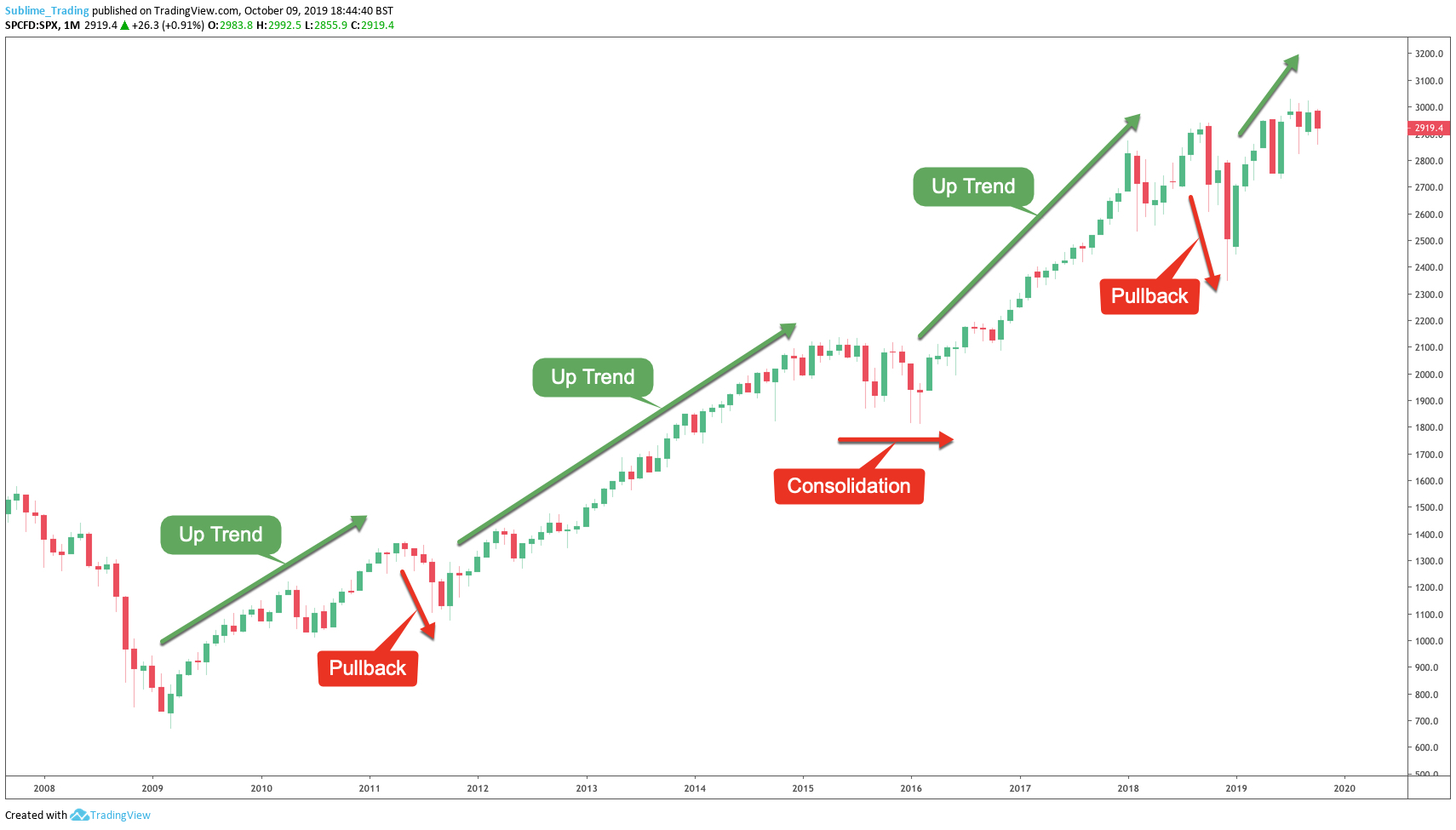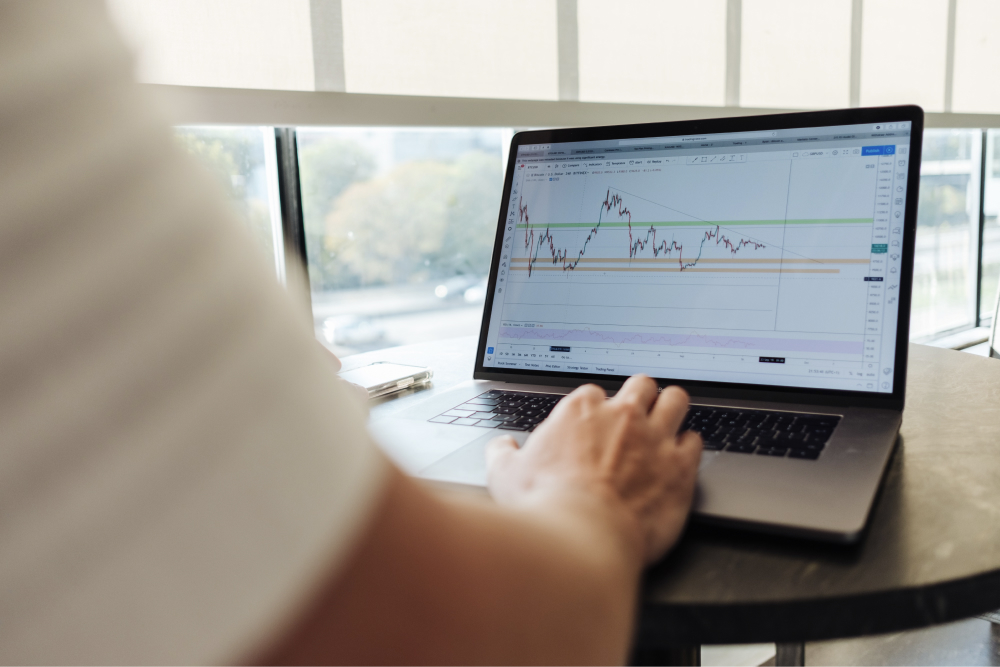Your financial education journey has been made simple with these easy to follow steps.

“How do I get started?” is probably one of those questions that gets left unanswered for one reason or another year after year and most likely with a heavy dose of regret. You are fully aware that taking control of your finances and understanding how to invest your money is the solution long-term particularly as you get older and start thinking about your pension and your retirement years.
You may have also identified investing as a possible solution to being in a position to retire much earlier and there is no doubt it will get you there. With the right processes in place, you will simply be blown away with what you can achieve over 5 to 10 years. The stuff of dreams can very much be your reality if you start smart, stay consistent and remain resilient.
The best processes are simple to learn but staying consistent year in year out is the challenge and how many fall short of their goals.
So let’s break down the financial education you need into 5 steps for you to be able to start off strong and remain strong throughout your lifetime as an investor.
Step 1 – Have a financially sound foundation to start from
Money cannot be plucked out of thin air, no matter how much the misleading and
unscrupulous splattered all over the internet try to convince you otherwise. If you don’t have money to invest, you won’t make money. It really is as simple as that.
The strength of investing is to totally remove the banking system and underperforming funds and instead, allow you to compound your salary and savings to far greater returns.

In order to do this, you need to have the right starting amount and you want to be in a position to add more money to your savings pot on a monthly basis. Ultimately, the more you have the more you can invest and see returns on and this means the quicker and larger the compound growth process will be. I recommend a minimum of £10 000 to get started and I will break this down in more detail in the next step.
So first and foremost, ensure you have a financially sound foundation to start from and this will mean getting a financial plan together. Do not underestimate the importance of this and how this will change your progress and productivity with a well thought out financial plan in place. Once you have completed this, it may require you to then hold off starting investing and instead focus your attention on finding a job that pays a better salary.
It will also force you to rethink and rework your outgoings to allow you to save more. Often people have a spending problem and not a money problem and so a shift in priorities is highly recommended.

As I often tell people, do not be afraid to live a few years like you do not want to live so you can then spend the rest of your life as you do. Sacrifices are essential for the greater good.
You may also want to prioritise clearing off any debt that you may have. If you are struggling with this and the interest you are paying then call up your creditors and get on a debt management programme. Ultimately, it is essential to:
-
Stop the compound interest working against you.
-
Get onto a debt management plan that works for you.
-
Clear your debt as much as possible.
-
Start saving money.
-
Start investing money.
-
Get the compound effect working for you.
As you can see, you need to reverse the whole compound effect from working against you to working in your favour and you need to start NOW. There are charities you can call to help you with this or you can call your creditors directly and engage them in conversation. Don’t suffer in silence, instead act and take advantage of the options available to you to get this under control.
Of course, there is good debt and bad debt and sometimes investing first and compounding the pot of money you have saved and your salary may be a better solution to paying off debt in the medium to long-term as long as your debts are well-managed. You are likely to pay off the debt quicker which will allow you to progress earlier.
Step 2 – Think like an investor from the get-go
Now that you have the right pot of money to get started, the key is to think like an investor from the very start and that means treating this new venture of yours as a business. Do not lose sight of your long-term goal in search of instant gratification and certainly do not allow others to derail you with their unfounded promises of quick riches.

You will need to brush up on certain aspects of your financial literacy to warrant having an “investor” title and this will almost certainly mean investing in a good course or two as well as the right tools for the job, such as a charting package, that are essential for finding good investment opportunities from the comfort of your home. All career choices have a learning phase as well as specialised tools to deliver results and this venture will certainly be no different.
Do not be like many newbie investors who approach this with a cheap mindset and try to build a life-changing investment portfolio pretty much for free with whatever information they can find on the internet, in free forums, at free seminars or in cheap books.
These all have their place in the early stages of learning but you will certainly need to step up and invest in the right course and the right tools once you are ready to get involved.
Also, do not allow yourself to fall prey to marketers-dressed-as-traders who seem to think “simple” and “easy” are synonyms, they are not. As already touched upon, the best techniques are simple but extracting profit consistently year in year out is far from easy.
Many of these scammers will paint a pretty picture of how you only need to make “a few pips a day” in just “a few minutes a day” and then try and sell you courses of varying prices to achieve retirement by the end of the month. If you have your “I’m an investor” hat on at all times, then these pitches will instantly have alarm bells ringing.
Fortunately, it is not too difficult to know how credible these individuals are if you stop for a moment to really focus on what they are saying as opposed to how they are selling it to you. You just need to ask the following 3 questions to know if you are dealing with the right person or not:
-
Do you have a FULL year (maybe 2) of verified history from a live broker account to prove your results?
-
Can I have a breakdown of the toolkit that you have created?
-
And will I be given access to this as part of your course?
If these cannot be answered credibly, then it is almost certainly quackery you are actually dealing with and you want to walk away. It is not too difficult to spot a fake if you always stay true to your long-term plan as opposed to being blinded by the short-term promises they offer but will not deliver on.
Step 3 – Setup tax-free environments to use as your investment vehicles
The days of investing being a playground only for the wealthy are long gone. Not only is the modern-day space a level playground but, depending where you live, it also offers a variety of ways to invest your money with your returns being free of capital gains tax. It would be a huge mistake not to take advantage of these. The 4 main options you have available to you are:
-
Spread betting accounts
-
SIPPs (Self-Invested Personal Pension)
-
(N)ISAs (Individual Savings Account)
-
SSASs (Small Self-Administered Scheme)
As someone who has been using spread betting accounts since I started my own personal journey, I would always recommend them as the perfect place to start for the reasons I cover below. It is without a doubt one of the most powerful ways of making money investing in the financial markets and we are extremely lucky to have access to them here in the UK.
The important thing to note is that not all brokers are the same. We go into more detail on what makes a good broker and how to choose one based on what you want to invest in and, crucially, your starting amount in our pdf 9 Questions to Help you Choose the Right Broker.
As mentioned in step 1, I recommend around £10,000 to get started and this is because you need the right starting amount in the right broker account to manage your risk properly. Brokers will happily allow you to and encourage you to open an account with “as little as £50” but this can and will be instantly lost.
As I have been trying to drill home and will continue to do so throughout the rest of this article as well as throughout all our blogs and content, you must think like an investor at all times. With broker accounts, that means starting with the right amount in the right broker (because, as mentioned, ultimately not all brokers are the same) to ensure you NEVER blow an account. For some brokers, a suitable starting amount is £2,000, while others £5,000 is needed and in others a lot more is needed.
Small and controlled losses are part and parcel of good investing but blowing accounts and feeling the pain and disappointment that comes with that does not have to be. Ignore the gurus who preach otherwise. It’s quackery. You have worked hard to earn and save that money so you need an approach that protects that at all times.
Now moving on, I am going to assume that the ego of owning a stock is not your priority here, however, making money is. Spread betting accounts allow you to do just that. They allow you to have exposure to an instrument without actually owning the underlying asset.
Price movement is measured in either pips (forex) or points (stocks and commodities) and where you can then allocate a value in pounds and/or pence to each pip or point. You then speculate on whether the market will move up or down and as a result, make or lose money depending on how much you have allocated per pip/point and the direction of the market. We go into a lot more detail in 9 Questions to Help you Choose the Right Broker but I will also be expanding on this in step 5.
Note: Let me take a moment here to say do NOT make the mistake of getting turned off by the negativity that surrounds spread betting accounts and official broker stats that suggest over 80% of users of spread betting accounts blow their accounts. Notice I use the word “users” because those who blow accounts have very little idea of what they are doing.
They are not competent investors or traders. These users are simply gambling and when you take on the house – or in this case – the market with little idea of what you are doing then you leave yourself wide open to being chewed up and spat out and let’s be frank, rightly so. Rewards that lead to a lifestyle change of complete control of money and time should be earned and not fluked. Ego very rarely gets rewarded in these cases.
Don’t let others project their greed, failures and fears onto you and let that dictate your own decisions. Unlike them, simply take your time getting educated and speaking to the right people to ensure you take full advantage of these life-changing opportunities open to you in exactly the right way.
So we can conclude that the 80% plus that are blowing accounts are doing so not because they are using a spread betting (which many incorrectly believe and hence become irrationally fearful of an extremely powerful wealth-creation vehicle) but how they are incorrectly using their broker account. The 80% plus are also blowing accounts not because of their ability (you all have it in you to become successful investors) but their approach, with greed as their primary driver. I expand on this further in the bullet points below.
Ultimately, we all have choices and it is essential that you make the choice of avoiding the herd mentality as you will end up part of these dismal statistics.

However, with your “I’m an investor” cap always on, what you should understand is that a spread betting account is a unique opportunity open to us all and an excellent route to market when used correctly. It offers:
-
A leveraged approach to the market
What this means is that you only need to put up part of the funds needed to make an investment as opposed to the whole amount allowing you exposure to instruments which through a normal broker account may be too expensive.
-
Cheap spreads
The array of accounts available to open online is without a doubt the best it has ever been which means that costs involved in building an investment portfolio have been driven right down. This is excellent news as it means more people can get involved with reasonable sums of money and this also will have a massive impact on your profit line long-term.
This is particularly true with spread betting accounts with brokers now competing over competitive spreads and commissions. We cannot completely cut out broker costs as this is part and parcel of the overheads of running a business but we can certainly keep them to a minimum with the right approach and the right account.
-
Exposure to multiple asset classes
A little known fact is that money flows from market to market which I cover in more detail in the next step.
A good spread betting account will allow you to have leveraged exposure to an array of instruments that include currencies, stocks, commodities and now even cryptocurrencies and hence build a portfolio around the best-performing instruments in the best-performing markets at any period of time.
Being able to identify which market the money is in, is the bedrock of good investing and is key to achieving consistent compounded growth year in year out.
-
The ability to short markets
A huge advantage to spread betting accounts is being able to short a market which means to make money when a market is going down. For example, whereas most would have lost significant money in the “crash” of 2008 holding onto long trades, good investors will have taken their profit from their long (or buy) trades from the years before when signs of a reversal from a bull market to a bear market were presenting themselves.
They then will have opened short positions throughout 2008 once a bear market had been confirmed to profit even further. You will be surprised with how remarkably simple it is to identify a bull market from a bear market when you know how to read charts which I expand on in step 4 next.
Spread betting accounts allow you to seamlessly move between and hence profit from the natural cyclic movements of the markets with ease, something traditional broker accounts do not allow you to do. They tend to be long-only accounts.
-
Excellent risk and exit management tools
Losses are part and parcel of investing. The name of the game is simply to keep your losses small and capped and your profit far larger and uncapped. If you cannot stomach losses then consider this as something that may not be for you but what you are then missing out on is the huge upside potential in winning investments that will make your losses forgettable and insignificant.
Spread betting accounts are designed to give you full control over how much you risk per investment and when you want to exit from either a losing trade or a winning trade. The correct terminology for this is “position sizing” where you allocate a percentage amount of your account that you are willing to lose per instrument, typically no more than 2% and an exit level called a stop-loss where you tell the broker you want to cut out from a losing investment.
These levels can easily be plugged into the broker online platform once you become familiar with the functionality and does not require you to call up like the good ol’ days.
The fact that you have the ability to do this confirms that people repeatedly blow spread betting accounts through a combination of over-risking, over-leveraging, over-trading and through the use of tight stop-losses or no stop-losses at all. It’s an uneducated approach with full focus on the upside and no consideration for the downside.
A good investor’s approach is the complete opposite way around. We focus on our downside first as that is well within our control and use that as a foundation to:
-
Never blow an account and be faced with large and soul-destroying losses.
-
Let the money effortlessly come to us.
As a reminder, our free pdf 9 Questions to Help Choose the Right Broker covers all of this in detail and more.
-
£80k protection
Most brokers will protect you for the first £80k you put into an account which is a great reassurance to have and a great reason to start your journey using a spread betting account.
An excellent book that builds further on what I have covered in steps 1, 2 and expands on SIPPs and ISAs as well touching on the benefits of spread betting accounts and is essential in your reading collection is How To Own The World by Andrew Craig. Andrew takes away the complexity and mystery the finance world is shrouded in and replaces it with a simplicity that will make you wish you had your finance-house in order yesterday.
Step 4 – Learn to trend follow using technical analysis
Now there are 2 parts to this which I will break down as follows:
-
What is trend following?
-
What is technical analysis?
What is trend following?
All markets from around the world move in exactly the same way. They either:
-
Move up which is a bull trend and where we go long to make money.
-
Move down which is a bear trend and where we go short to make money.
-
Move sideways which is consolidating market and where we stand aside and protect our money.
The two most profitable environments and have proven to be since the dawn of the markets are bull trends and bear trends. Particularly profitable are both bull trends and bear trends that are emerging from long-term periods of consolidation. A sideways market, also known as a range-bound market, acts as an excellent foundation for a trend to develop.
Note: There is a saying in the investing world which is the longer the consolidation the bigger the breakout. The S&P 500 is a good example of that. The consolidation in 2014/2015 lasted 16 months before a breakout and bull trend which lasted 14 months.
By its very definition, a trend is something that lasts long-term, fashion for example. Good trends last months even years whereas fads come and go and are quickly forgotten about. Investing is no different. Good trends can last months at a time across all major asset classes:
-
In forex, trends can last 3 to 12 months.
-
In stocks, trends can last 12 to 24 months.
-
In commodities, trends can last 12 to 24 months.
It will be interesting to see how well cryptocurrencies such as Bitcoin and Ethereum trend if and when they breakout. For now, the initial boom is very much over and this is firmly a sideways market so if you missed out on this boom then stop fretting and don’t let FOMO get the better of you.

Instead, learn to treat this like any other market that cycles between trends and periods of consolidation. Your priority, for now, is best placed putting your time and attention in learning how to establish market conditions and being able to identify trending markets from sideways markets. So if and when you do get involved in cryptos, it is as an investor making a well-informed decision and not just a clueless punter hoping for riches.
What is technical analysis?
Technical analysis (TA) is just a flashy term for looking at price action in the form of charts for any instrument to make your investment decisions. TA means looking at the history of the chart to determine patterns that price made in the past that are likely to repeat in the future.
Ultimately, patterns repeat and the pattern that we are particularly interested as covered above are long-term trends. If an instrument has trended well in the past then it is very likely to trend well in the future and so TA and charting will help us determine this. Richard Dennis, John W. Henry, Jim Rogers and Jesse Livermore are examples of people who made great wealth using TA.

This is in contrast to using fundamental analysis (FA), that is using news items, to make your investment decisions. The great man himself, Warren Buffett is a great example of someone who has used FA to his full advantage.
Both are proven methods but come with their challenges. As a private investor, you have to take into consideration that you are already a busy professional or business owner, maybe married with children, have a social life and hobbies and so time is no doubt short. What you want is an analytical approach and route to market that can be done from home and adapted around your busy lifestyle as seamlessly as possible and that is why TA has the edge.
FA will require you to do a lot of research and reading and sifting through what is relevant and what isn’t which will be time-consuming. TA, on the other hand, takes all of this into consideration for you and reflects it within price on the charts. Often news is nothing more than noise which gets absorbed into the long-term trend of the market making it far easier for you to make informed decisions using charts.
In recent years, with the advent of the tech age, TA has gained popularity with a plethora of charting packages now available online from free to absurdly expensive. You will no doubt have to invest in one if you want to take this seriously as part of your overheads of running a business.

Brokers will also have their own charting package too which is usually free to access when you open an account and that is because they want you opening and funding and executing positions as quickly as possible so they can start collecting their spreads and commissions. They are free for a reason and that is because they are basic and lack the functionality that you need.
A good charting package allows you to create your own tools which will require you to have some programming knowledge but that means you knowing what the tools need to do. This is where a good course and good trainers come in with a proven track record as mentioned in step 2. Specialised tools will have already been created and will already be in use by the trainers for their own portfolio and so be given to you as part of the training course. All you need to do is turn up and be taught how to use them effectively.
In our community, we use and have developed tools for TradingView for the following reasons:
-
It is very well priced.
-
It is browser-based.
The internet, of course, has become a platform for non-experts to position themselves as experts through the use of clever and misleading marketing techniques. The reality is that good TA techniques are simple to learn. The challenge is rummaging through all the quackery on the internet trying to separate what works from what doesn’t.
Don’t worry! We have you covered in our free 4-part training series which gets to the heart of how to use charts effectively. We share our high-probability trading and investing filter which defines our edge and highlights solid investment opportunities. It is the same filter that we have used to achieve over 300% since 2017 in our verified trade log.
Tip: If you cannot define your edge, you don’t have one. And if you don’t have one, you will get eaten by someone who does.
This 4-part series has you covered with a proven edge that you can use across all asset classes including forex, stocks, commodities and even cryptocurrencies.
Step 5 – Stick to your game-plan
Resilience cannot be underestimated in the world of investing. Just because you have made the conscious decision to start investing does not mean you are going to be instantly rewarded. Far from it.
What Bill Gates said holds very true:
-
Most people overestimate what can be done in one year and underestimate what they can do in 10 years.
Investing is about playing the long-game and more importantly, embracing compound growth.
The main challenge facing people today in this online world we live in is sheer information overload and figuring out the wheat from the chaff. This is really where many goals and dreams are broken or taken from you by following the wrong people and paying for courses that over-promise and under-deliver.
I cannot stress the importance of what I said in step 2 and to think like an investor from the get-go. You have your hard-earned money on the line here so do not give your money away cheaply to the market or the marketers.
Take your time, do your research, speak to the right people and only when you have got all the answers you need, take the step forward.
So to summarise, make sure you:
-
Start by creating a plan to get your finances in order.
-
Are funded correctly to get started.
-
Are able to add money to your broker account regularly.
-
Setup tax-free environments to invest in if open to you.
-
Get to grips with trend following and technical analysis.
-
Embrace compound growth.
And finally, have a 5 to 10-year game plan built on knowledge and resilience. Be aware enough, brave enough and smart enough to be contrarian to the get-rich-quick schemers who fail miserably and instead play the long-game where life-changing rewards are waiting for you.
I hope this blog has helped reinvigorate and inject some spice into how you approach your investment decisions going forward. This really is a must and it needs to start NOW.
We are certainly on hand to help. If you have any questions, myself and my team can be emailed on hello @ sublimetrading . io.
Until then, keep it simple, keep it Sublime!

